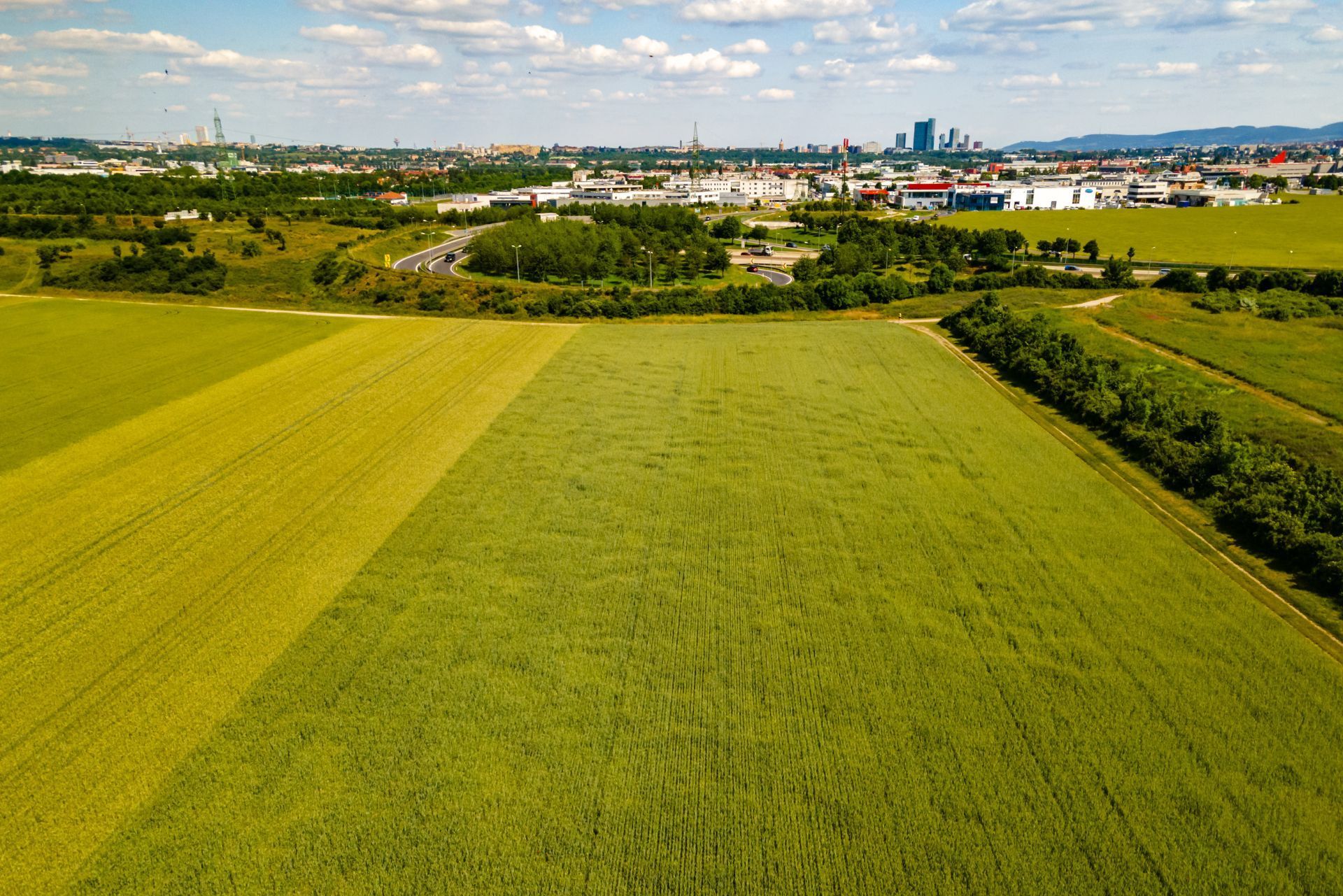Top 3 Recommended Policies

Investing in vacant land in New York can be an exciting venture, but it also comes with its own set of risks. One crucial aspect that every landowner should consider is insurance. Vacant land insurance is designed to protect property owners from various liabilities and risks associated with owning undeveloped land. This article will explore everything you need to know about vacant land insurance in New York, including its importance, types of coverage, and factors influencing insurance costs.
Understanding Vacant Land Insurance
Vacant land insurance is a specialized policy that provides coverage for land that is not currently being used for residential or commercial purposes. Unlike traditional homeowners insurance, which covers structures and personal property, vacant land insurance focuses on the unique risks associated with owning undeveloped land.
Why is Vacant Land Insurance Important?
Owning vacant land can expose the owner to various liabilities. For instance, if someone were to trespass on the property and get injured, the landowner could be held liable for medical expenses and other damages. Vacant land insurance helps mitigate these risks by providing financial protection against lawsuits and claims.
Additionally, vacant land insurance can cover risks such as vandalism, theft, and natural disasters. While the land may not have structures, it is still vulnerable to various threats that could lead to significant financial loss. For example, if a severe storm were to cause flooding or landslides on the property, the owner might face costly cleanup and restoration efforts. Having the right insurance can alleviate some of these financial burdens and provide peace of mind.
Types of Coverage Available
When considering vacant land insurance, it’s essential to understand the different types of coverage available. Policies can vary widely, but some common types include:
- Liability Coverage: This protects against claims made by third parties for bodily injury or property damage that occurs on the land.
- Property Coverage: This can cover the land itself from risks like fire, vandalism, and other damages.
- Environmental Coverage: This protects against environmental hazards, such as contamination or pollution issues that may arise.
Moreover, some policies may offer additional endorsements or riders that can be tailored to specific needs. For instance, if the land is located in an area prone to wildfires, a policy might include specific coverage for fire damage or even a higher limit for debris removal. Understanding these options can help landowners customize their insurance to better fit their unique circumstances and potential risks. It’s advisable to consult with an insurance agent who specializes in vacant land to ensure that all possible hazards are adequately covered.
Furthermore, the process of obtaining vacant land insurance may involve an assessment of the property’s location, zoning, and any existing environmental issues. Insurers might require a thorough evaluation to determine the appropriate premiums and coverage limits. This initial assessment can also highlight any potential risks that the owner might not have considered, allowing for proactive measures to be taken. By being informed and prepared, landowners can protect their investments and ensure that their vacant land remains a valuable asset for the future.

Factors Influencing Vacant Land Insurance Costs
The cost of vacant land insurance can vary significantly based on several factors. Understanding these factors can help landowners make informed decisions and find the right coverage at a reasonable price.
Location of the Property
The geographical location of the vacant land plays a crucial role in determining insurance costs. Areas prone to natural disasters, such as floods or wildfires, may have higher premiums due to the increased risk of damage. Additionally, urban areas with higher population densities may also see increased rates due to the potential for liability claims. For example, a plot of land situated in a coastal region might face additional scrutiny and higher premiums due to the risk of hurricanes and flooding, while land in a rural area may be assessed differently based on its susceptibility to other environmental hazards. Furthermore, local building codes and regulations can also impact insurance costs, as areas with stricter requirements may necessitate more comprehensive coverage.
Land Use and Zoning
The intended use of the land can influence insurance rates as well. For instance, land zoned for commercial use may have different risks compared to residentially zoned land. If the land is located near hazardous materials or industries, this may also impact the cost of insurance. Moreover, landowners planning to develop their property into residential or commercial spaces should consider the potential changes in insurance costs as development progresses. The type of activities planned for the land can also play a role; for example, agricultural land may require specific coverage options that address unique risks associated with farming equipment or livestock. Understanding the zoning classifications and potential future uses of the land can help landowners anticipate any shifts in their insurance needs.
Coverage Amount and Deductibles
The amount of coverage selected and the deductibles chosen will directly affect the insurance premium. Higher coverage limits typically result in higher premiums, while opting for a higher deductible can lower the cost. It’s essential for landowners to assess their risk tolerance and choose a policy that balances coverage with affordability. Additionally, some insurance providers offer discounts for bundling policies or for landowners who implement risk mitigation measures, such as maintaining clear boundaries or installing security systems. Evaluating these options can lead to significant savings over time. Landowners should also be aware of the specific terms and conditions of their policy, as certain exclusions or limitations may apply, potentially affecting their financial protection in the event of a claim. Understanding the nuances of coverage can empower landowners to make better choices regarding their vacant land insurance.
Common Exclusions in Vacant Land Insurance
While vacant land insurance provides valuable protection, it is essential to be aware of common exclusions that may apply. Understanding these exclusions can help landowners avoid unexpected surprises when filing a claim.
Natural Disasters
Many policies may exclude coverage for certain natural disasters, such as earthquakes or floods, unless additional riders are purchased. It is vital for landowners in high-risk areas to consider these exclusions and seek supplemental coverage if necessary. For instance, properties located near coastlines may be particularly vulnerable to hurricanes and storm surges, making it crucial to evaluate the specific risks associated with the location. Additionally, landowners should stay informed about local weather patterns and geological assessments that could impact their land, as proactive measures can mitigate potential losses.
Intentional Damage
Insurance policies typically do not cover damages resulting from intentional acts, such as vandalism committed by the property owner or their associates. This exclusion emphasizes the importance of maintaining the property and ensuring it is secure from potential threats. Landowners should consider implementing security measures such as fencing, surveillance cameras, or regular patrols to deter unauthorized access. Moreover, fostering a good relationship with neighbors can also be beneficial, as they can help keep an eye on the property and report any suspicious activities.
Existing Environmental Issues
If the land has pre-existing environmental issues, such as contamination or pollution, these may not be covered under standard policies. Landowners should conduct thorough assessments and consider obtaining environmental coverage if necessary. Engaging with environmental consultants can provide insights into potential liabilities and help develop a remediation plan if issues are identified. Furthermore, understanding local regulations regarding land use and environmental protection can aid landowners in making informed decisions, ensuring compliance while also protecting their investment in the long term.
How to Choose the Right Vacant Land Insurance Policy
Choosing the right vacant land insurance policy can be a daunting task, especially with the variety of options available. However, several steps can help simplify the decision-making process.
Assess Your Needs
Before shopping for insurance, landowners should assess their specific needs. Consider factors such as the location of the land, intended use, and potential risks. This assessment will help determine the type and amount of coverage required. For instance, if the land is located in an area prone to natural disasters like floods or wildfires, it may be wise to seek additional coverage for those specific risks. Additionally, if the land is intended for future development, understanding the zoning laws and potential liabilities associated with construction can further inform your insurance needs.
Compare Multiple Quotes
Obtaining quotes from multiple insurance providers is crucial. Each insurer may offer different coverage options and premiums, so comparing quotes can help identify the best value. It is also beneficial to read customer reviews and check the financial stability of the insurance companies being considered. Look for insurers that have a strong track record in handling claims efficiently, as this can significantly impact your experience should you need to file a claim. Furthermore, consider the types of discounts that may be available, such as bundling policies or maintaining a good credit score, which can help lower your overall insurance costs.
Consult with an Insurance Agent
Working with an insurance agent who specializes in vacant land insurance can provide valuable insights. An experienced agent can help navigate the complexities of different policies, ensuring that landowners select the coverage that best meets their needs. They can also assist in understanding the nuances of various endorsements that can be added to a policy, such as coverage for liability in case someone is injured on the property. Moreover, an agent can keep you informed about any changes in the insurance market that could affect your policy, helping you to make proactive adjustments as needed.
Frequently Asked Questions about Vacant Land Insurance
Many landowners have questions regarding vacant land insurance. Here are some frequently asked questions to provide further clarity.
Is vacant land insurance mandatory?
While vacant land insurance is not legally required, it is highly recommended for protecting against potential liabilities and risks. Lenders may also require insurance if the land is financed. Additionally, having insurance can provide peace of mind, knowing that you are safeguarded against unforeseen events such as natural disasters, vandalism, or trespassing. In some cases, local municipalities may have specific regulations that could influence the necessity of insurance, particularly if the land is located in an area prone to environmental hazards.
Can vacant land insurance cover future construction?
Most vacant land insurance policies do not automatically cover future construction. If the landowner plans to build on the property, it is essential to discuss this with the insurance provider to ensure adequate coverage is in place during and after construction. This is particularly important because construction projects can introduce new risks, such as liability for injuries on-site or damage to neighboring properties. It may be beneficial to explore additional endorsements or policies that specifically cater to construction-related risks, ensuring comprehensive protection throughout the building process.
How often should vacant land insurance be reviewed?
Landowners should review their insurance policies annually or whenever significant changes occur, such as changes in land use, location, or market conditions. Regular reviews ensure that coverage remains adequate and relevant. Furthermore, as the value of the land may appreciate over time or as zoning laws change, it is crucial to adjust the policy limits accordingly. Engaging with an insurance agent who specializes in land coverage can provide valuable insights into emerging risks and help tailor the policy to meet evolving needs. This proactive approach can prevent gaps in coverage that might arise from neglecting to update the policy in line with changing circumstances.

Conclusion
Vacant land insurance is a vital consideration for anyone owning undeveloped land in New York. Understanding the types of coverage available, the factors influencing costs, and the common exclusions can equip landowners with the knowledge needed to make informed decisions.
By assessing individual needs, comparing quotes, and consulting with insurance professionals, landowners can secure the right policy to protect their investment. Ultimately, investing in vacant land insurance not only safeguards against potential liabilities but also provides peace of mind, allowing landowners to focus on their future plans for the property.
Contact Us
Phone
Location

